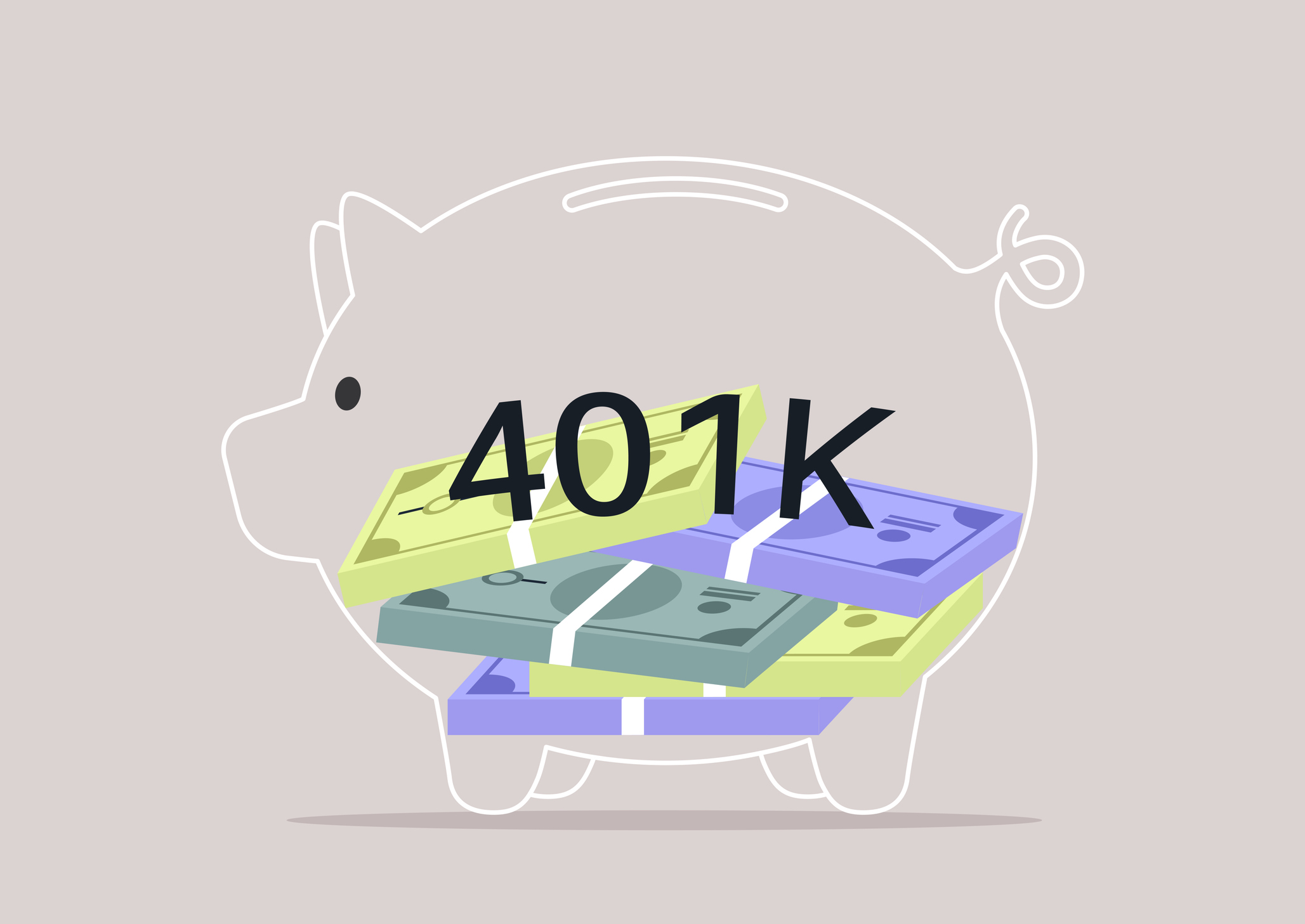I'm a Conservative Investor, and Other Lies We Tell Ourselves
No investment is completely safe. You need to understand the risks in your portfolio.

I often meet with prospective clients shortly before they plan to retire and ask them about their current financial situation and goals. During this first meeting, many say, "I'm a conservative investor." But the amount of risk in their investment portfolios sometimes tells a completely different story.
One common misconception of being "conservative" is having a large percentage of the portfolio in a stock that has performed well in the past. Even if a particular stock has performed well in the past, it is never a guarantee of future results. All stocks are subject to a significant amount of risk, including loss of principal. Risks for individual stocks include overall market risk, industry-specific risk, company-specific risk, new technology, new competitors and new regulations—all of which can adversely affect the business model. In fact, the average individual stock within Standard & Poor's 500-stock index has a volatility that is about twice that of the index itself.
Another misunderstanding is categorizing stocks paying large dividends as a conservative investment. Remember that dividends are discretionary and can be reduced or canceled without warning. A company having difficulty may cut the dividend as one of their first relief points. When this happens, people who bought the stock primarily for the high dividend may sell, impacting the underlying stock price.
From just $107.88 $24.99 for Kiplinger Personal Finance
Become a smarter, better informed investor. Subscribe from just $107.88 $24.99, plus get up to 4 Special Issues

Sign up for Kiplinger’s Free Newsletters
Profit and prosper with the best of expert advice on investing, taxes, retirement, personal finance and more - straight to your e-mail.
Profit and prosper with the best of expert advice - straight to your e-mail.
I have also met with prospective clients who own investments with high current incomes. Though these types of investments may provide a bit of outperformance some of the time, every once in a while they get hit really hard. During the 2008 crisis, many preferred stocks were negatively affected at higher rates than the stock market. Although they may appear conservative since they may go a period of time producing outsized yields, remember that just because they have not been hit yet, does not mean they cannot get hit.
We cannot talk about conservative investing without mentioning fixed income investments such as bonds. The caution here is to understand the credit rating and the associated risk. A promise to pay is only as good as the party making the promise. People tend to underestimate the credit risk of a large company, assuming big equals safe. Additionally, brand recognition can create less perceived risk, regardless of the lower credit quality. Remember that bonds are subject to market interest rate risk if sold prior to maturity. Bond values will decline as interest rates rise and bonds are subject to availability and change in price.
Be aware of your risk exposure. A good way to think about an investment is to consider whether it acts more equity-like or more bond-like in its volatility and take the level of risk into account relative to the answer. There is no magic investment. When you see a company paying 6% while their peers are paying 1% or 2%, understand that they are not paying more without good reason.
I am not saying to never invest in the type of investments mentioned above. One or more may be suitable for your investment portfolio, but that is something your financial adviser can help you to determine based on your investment objectives. Just keep in mind that no investment strategy can guarantee a profit or protect against loss in periods of declining values.
The Risk of Being Too Conservative
In contrast to the "conservative" investors with risky investments in their portfolios, there are also investors on the other end of the spectrum who are so concerned about losing their money that they are too conservative for their financial situation. These investors come to us with conservative investments such as treasuries, short-term certificates of deposit and money market accounts. After talking about their withdrawal need, they are often surprised at the possible outcome.
Consider a 65-year-old couple with $1 million, withdrawing 5% per year. If interest rates stay where they are today, they will run out of money in less than 25 years. If we experience inflation, or if they need to give themselves a raise, they could run out of money in less than 20 years, by age 85. According to the Social Security Administration, about one out of every four 65-year-olds will live past the age of 90 and one out of 10 will live past the age of 95.
It is important to understand how historically low interest rates have made finding investments that produce sufficient income difficult. It is very different from 10 years ago when an investor could just park a million dollars in a money market account and collect $50,000 a year of interest without having to touch the principal. A conservative investor needs to adjust to this new environment, which could persist for quite a while.
In investing, so much is beyond the scope of your control, making it even more important to control the things that you can control. This can include where you own your investments, where you draw from and cutting back on expenses where possible. If you have not already, you should establish a disciplined approach to making adjustments to your investments in order to maintain your risk profile. Whether you are a do-it-yourselfer or have been working with a financial adviser for quite some time, you may also want to consider an independent review by someone who can objectively look at your portfolio.
Mark Cortazzo, CFP®, CIMA® is the founder and Senior Partner of MACRO Consulting Group, an independent wealth management firm located in New Jersey.
Securities offered through LPL Financial, member FINRA, SIPC. Investment advice offered through MACRO Consulting Group, LLC, a registered investment adviser and separate entity from LPL Financial.
Profit and prosper with the best of Kiplinger's advice on investing, taxes, retirement, personal finance and much more. Delivered daily. Enter your email in the box and click Sign Me Up.

Mark Cortazzo, CFP®, CIMA® is the founder and senior partner of MACRO Consulting Group, an independent wealth management firm located in New Jersey. He offers expert financial advice as an Investment Adviser Representative and retirement planning specialist. With over 25 years of experience in financial services, Cortazzo has been profiled in many publications and has earned numerous industry awards and accolades.
-
 The SEC Is Concerned for Older Investors and Retirement Savers. Here's What You Should Know
The SEC Is Concerned for Older Investors and Retirement Savers. Here's What You Should KnowThe SEC focusing on older investors, retirement and college savers, and private securities. Here's how those changes impact you.
-
 Vesting, Catch-Ups and Roths: The 401(k) Knowledge Quiz
Vesting, Catch-Ups and Roths: The 401(k) Knowledge QuizQuiz Test your understanding of key 401(k) concepts with our quick quiz.
-
 Why You Should Pay Attention to Company Guidance
Why You Should Pay Attention to Company GuidanceUnderstanding how corporate profit forecasts affect analysts’ estimates and stock ratings can help you make investment decisions.
-
 How to Protect Yourself and Others From a Troubled Adult Child: A Lesson from Real Life
How to Protect Yourself and Others From a Troubled Adult Child: A Lesson from Real LifeThis case of a violent adult son whose parents are in denial is an example of the extreme risks some parents face if they neglect essential safety precautions.
-
 To Build Client Relationships That Last, Embrace Simplicity
To Build Client Relationships That Last, Embrace SimplicityAs more automation becomes the norm, you can distinguish yourself as a financial professional by using technology wisely and prioritizing personal touches.
-
 Client Demand Is Forcing Financial Advisers to Specialize: How to Deliver
Client Demand Is Forcing Financial Advisers to Specialize: How to DeliverThe complexity of wealthy clients' needs — combined with AI and consumer demand — suggests the future of financial planning belongs to specialized experts.
-
 A Financial Planner Takes a Deep Dive Into How Charitable Trusts Benefit You and Your Favorite Charities
A Financial Planner Takes a Deep Dive Into How Charitable Trusts Benefit You and Your Favorite CharitiesThese dual-purpose tools let affluent families combine philanthropic goals with advanced tax planning to generate income, reduce estate taxes and preserve wealth.
-
 A 5-Step Plan for Parents of Children With Special Needs, From a Financial Planner
A 5-Step Plan for Parents of Children With Special Needs, From a Financial PlannerGuidance to help ensure your child's needs are supported now and in the future – while protecting your own financial well-being.
-
 How Financial Advisers Can Best Help Widowed and Divorced Women
How Financial Advisers Can Best Help Widowed and Divorced WomenApproaching conversations with empathy and compassion is key to helping them find clarity and confidence and take control of their financial futures.
-
 A Wealth Adviser Explains: 4 Times I'd Give the Green Light for a Roth Conversion (and 4 Times I'd Say It's a No-Go)
A Wealth Adviser Explains: 4 Times I'd Give the Green Light for a Roth Conversion (and 4 Times I'd Say It's a No-Go)Roth conversions should never be done on a whim — they're a product of careful timing and long-term tax considerations. So how can you tell whether to go ahead?
-
 A 4-Step Anxiety-Reducing Retirement Road Map, From a Financial Adviser
A 4-Step Anxiety-Reducing Retirement Road Map, From a Financial AdviserThis helpful process covers everything from assessing your current finances and risks to implementing and managing your personalized retirement income plan.